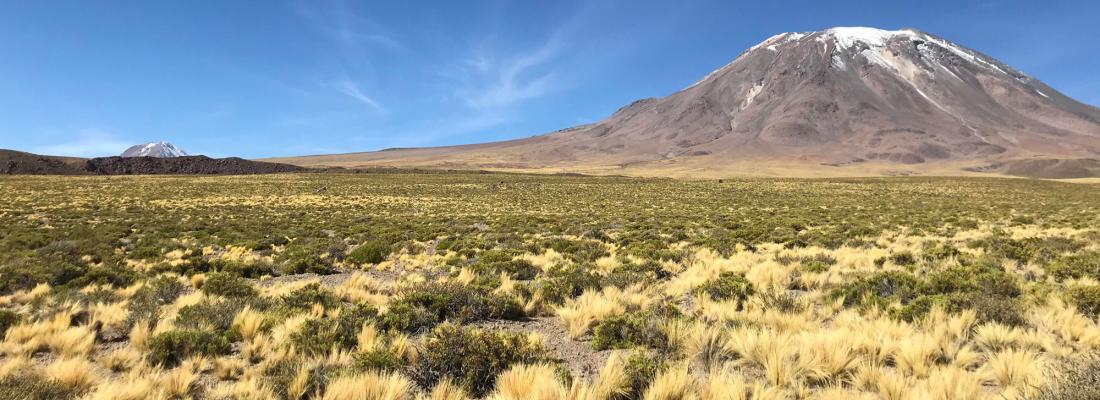Climate change and risks Reading time 2 min
Plant resilience under extreme conditions: innovation leads to new discoveries in the Atacama desert
Published on 29 March 2022

The harsh world of the Atacama Desert
This desert, which is the only one of its kind on Earth, is one of the most inhospitable regions of the planet, where altitudes of between 2400 and 4500 metres, extreme temperature stress in the upper elevations, high salinity at lower altitudes, low soil nitrogen content and very strong light levels, conspire to create the harshest of conditions for the small group of plants that grow there. In light of the ongoing climate emergency, the team chose to explore the mechanisms by which these plants adapt to the extreme conditions using the science of metabolomics, the study of all molecules involved in a living plant’s metabolism.
Revealed: plants use the same strategies to adapt to extreme environments
Predictive metabolomics is an innovative technique that has made it possible for scientists from INRAE working on resilience mechanisms to analyse nearly 5000 metabolic markers from the 24 dominant plant species growing at a range of different altitudes in the Atacama. Their use of statistical processing, based on machine learning1, enabled them to identify 39 compounds that were present in all species studied, sufficient to predict a plant’s immediate environment with a 79% accuracy rate. The team was successful in linking the variations it observed in these molecules to a number of environmental stress factors such as freezing temperatures, water deficit and strong light.
The study also demonstrates that very different wild species adopt the same evolutionary metabolic strategies to adapt and develop resilience in extreme environmental conditions. Remarkably, predictors identified by the team are also to be found in crop species grown elsewhere such as Poaceae (including maize), Fabaceae (peas), Solanaceae (tomatoes) and Asteraceae (sunflowers). Currently, the development of a new plant species to match chosen environmental criteria (such as frost resistance) demands a decade of work by scientists and producers. Use of the multi-species approach that has benefited this study would vastly reduce this time-scale, allowing growers to adapt more speedily to the constraints of climate change.
Reference
Dussarrat, T., Prigent, S., Latorre, C., Bernillon, S., Flandin, A., Díaz, F. P., et al. (2022). Predictive metabolomics of multiple Atacama plant species unveils a core set of generic metabolites for extreme climate resilience. New Phytologist, nph.18095. DOI:10.1111/nph.18095.
[1] Machine learning involves a statistical approach that enables machines to learn automatically from algorithms, often using very large data sets.
